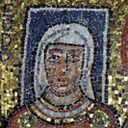0225 Transvestite Women Saints: Performing Asceticism in Late Antiquity
Identifiers (Article)
Identifiers (Files)
Abstract
During Late Antiquity, the secondary importance of women compared to men was manifest through attitudes to their spiritual prowess; it was assumed that a characteristic of the female was an absence of potential asceticism except in exceptional circumstances. Monastic asceticism at the period was dominated by male participants; there were cultural anxieties about 'womanish men', meaning that iconic representations of gender and spirituality are complex and informed by both secular and religious practices. In order to perform asceticism, some women dressed as men. This transvesticism did not simply guarantee acceptance, and some interpretations of church teachings asserted that true holiness predated a division between gender. Virginity was greatly valued. The metaphorical adorning of the soul rather than the body became a means to performing asceticism.
Statistics


License

This work is licensed under a Creative Commons Attribution-NonCommercial-NoDerivatives 4.0 International License.



